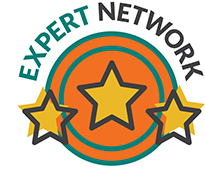By Judy Carmody, Ph.D., Carmody Quality Solutions, LLC
My hope is that you are on a couch or in a comfy chair sipping hot chocolate or some other holiday beverage as you read this.
As always, now is the time — when one year ends and another begins — to reflect back and prepare for the year to come. But I’m not going to suggest you make resolutions for 2019.
As you unwind and think about next year, rather than 12 days of gifts, here are 12 months of suggestions to assist you in helping your organization bring its quality efforts and programs to the next level. As you think about where you want to be in 2019, consider these thoughts as strategies for building more credibility, cachet, and value around quality.
So, ready, set, reflect.
1. January: Quality is everyone’s responsibility. Watch over it like a shepherd.
Quality is not what you must do alone, but rather what your company and you can do; it is an active team sport. The most successful companies make quality a core value — a belief instead of a passive compliance checkbox activity. If you can find ways to show people they are valued, they will want to join a winning team. The more you can get people to understand their dynamic role in quality, the better for all.
2. February: It’s all about collaboration instead of division. Be a partner, not the police.
Instead of that initial response of, “We can’t do that,” change it to “We can, and here’s how.” Think of yourself as a part of a team, and that you all succeed or fail together. Articulate it by saying, “I want us to succeed, and here is a suggestion how we can do that.” Remember that FDA requirements are an expectation of achieving standards. There are ways to meet standards while engaging with staff, so quality is not seen as a burden they must shoulder.
3. March: “GCP is the new GMP.”
As we move through 2019, you will see additional time spent helping good clinical practice (GCP) groups get educated, focused, and be accountable for what has been standard GMP practices for the last five years. Find ways to bridge the gap between GMP and GCP. Engage with both groups and have them help each other. Make bridging the gap a strategic initiative early in the year.
4. April: Resolve to do more listening and less talking.
The noted scholar, researcher, and “Father of Listening,” scientist Ralph Nichols, said, “The most basic of all human needs is to understand and be understood. The best way to understand people is to listen to them.” When you listen, you engage and allow people to be heard. You also gain their trust and respect.
5. May: Think creatively about reaching your audiences. Learn how they learn.
Nothing is more soul-crushing than a classroom setting with a trainer talking at people about material they must know. Make learning more engaging and fun. Placing chairs in a circle, rather than in the traditional classroom setting, can change the dynamic of the environment. Involve company leaders, so they provide the larger picture and the importance of what they are doing. Having a senior leader open a session with a brief, 5-minute speech demonstrates that the commitment to learning starts at the top, which is a strong implied message.
6. June: Spend more time in other people’s offices and less in your own.
This is the basic tenet of MBWA (management by walking about). Going out to meet people in labs or on manufacturing floors creates many opportunities: it allows you to teach and coach in a less formal setting; it provides you more visibility; and it permits opportunistic “moments” to listen, learn, and get feedback in a nonthreatening, informal environment. This is how you build relationships and trust.
7. July: Training is learning; rebrand training as ongoing education and investment in people.
Change the messaging from “compliance training” to “education opportunity.” Enlist others to help create alternatives that are engaging and entertaining. An off-site location can improve the perception of the experience. It also shows that you value people by taking the session off-site during the workday.
8. August: Creating SOPs takes a village, not an echo chamber.
SOP development works much better as a team sport because everyone shares concerns and addresses challenges early on. Quality can bring together people involved in a procedure to discuss and determine necessary steps. The approach can be educational, break down silos, and improve process efficiency.
9. September: “Be specific-er.” Be a definer.
This will be something to remember as part of any GCP SOPs you create. Again, take a page from GMP. When it comes to roles and responsibilities be “specific-er” about who is involved, who does what, and how they do it … step by step.
10. October: Find balance. Define clear steps to execute consistently, but build in flexibility to manage realistically.
The goal is to remain in compliance but avoid bottlenecks and unnecessary procedures. Questions to ask include: “Can we find a better way to do it and document it?” Or “do we need to train everyone in the company on an SOP that only affects GCP?” Ask the questions. Be ruthless in getting to the core of issues.
11. November: Remember “Quality of Life” in quality. Don’t self-inflict process pain. Simplify.
Start with the goal in mind and work your way backward. Don’t develop an SOP just because you need to check a compliance box. Focus on a goal and what you want to achieve. This will inform and improve your process and mitigate “analysis paralysis.”
12. December: Events happen. Don’t be scared by them. Be ready for them.
Think of it as fire prevention; it can be easier than firefighting. Unexpected events happen. Time invested in developing “drills” and procedures on the front end is better than spending it on the back end creating documentation to explain why systems are out of compliance.
Quality is an active process that provides for continuous feedback and improvement. Strong, active quality programs enrich a company, as opposed to compliance, which is more of a passive policing approach.
Building a voluntary quality culture is not a linear process, but beginning with these steps can get you there over time. It’s a marathon, not a sprint.
So, here’s to a happy, healthy “Quality 2019.” Get active!
About The Author:
 Judy Carmody, Ph.D., is the founder and principal consultant of Carmody Quality Solutions, LLC (CQS). She has 20+ years of expertise in applied technology, bench chemistry, analytical development, validation, quality management, and senior leadership. She has built quality management systems for both startup and Fortune 500 companies.
Judy Carmody, Ph.D., is the founder and principal consultant of Carmody Quality Solutions, LLC (CQS). She has 20+ years of expertise in applied technology, bench chemistry, analytical development, validation, quality management, and senior leadership. She has built quality management systems for both startup and Fortune 500 companies.
Carmody founded Avatar Pharmaceutical Services, an FDA-registered contract research organization that provided quality, submission-ready, customized analytical services in compliance with cGMP. She grew Avatar to 25+ employees and more than 75 clients before it was purchased by a Boston-based pharmaceutical company in 2010. She holds a Ph.D. in analytical chemistry from Clark University in Worcester, Massachusetts. Please connect with her on LinkedIn.
